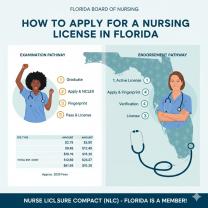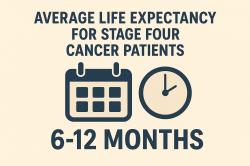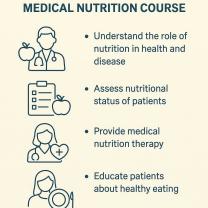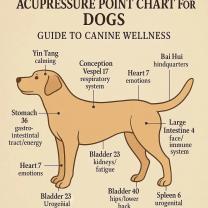How long should you stay at your maximum heart rate?
When you’re pushing yourself during a tough workout, the goal is often to elevate your heart rate to boost cardiovascular fitness. To manage this effort, fitness experts use heart rate zones—specific ranges of your maximum heart rate that correspond to different training benefits and intensities.
While momentarily reaching your maximum heart rate (MHR) can be an exhilarating way to push your physical limits, staying in this zone for too long can be risky and even counterproductive.
This guide will provide a detailed, science-backed explanation of how long you can safely remain at maximum heart rate, show you how to calculate your MHR based on age, and offer practical advice on how to use heart rate data to train smarter, not just harder.
How Long Should You Stay at Your Maximum Heart Rate?
The simple answer is: not long.
Staying at your maximum heart rate (generally defined as 90–100% of MHR) should be limited to very short, controlled bursts. This zone is typically reserved for the peak effort phases of high-intensity interval training (HIIT), and even then, these efforts are brief and followed by periods of active recovery.
For most healthy individuals, the recommended duration for these maximum effort bursts is usually:
30 seconds to 2 minutes per interval.
These intervals should be performed only after a thorough warm-up and should be spaced out with longer recovery periods where your heart rate drops back down to a lower zone (60–70% MHR).
Beginners and those with pre-existing health conditions should avoid sustaining this zone for any extended period entirely, as the cardiovascular strain is significant. The body cannot sustain maximum effort because it quickly switches to anaerobic metabolism, which rapidly produces lactic acid and causes intense fatigue.
Even elite athletes only sustain near-maximum effort (Zone 4/5) for limited periods during competition, such as the final sprint of a race. This is almost always done under careful self-monitoring and professional supervision. Pushing to this limit too frequently or for too long without proper recovery can lead to serious overtraining, fatigue, and injury.
What Is the Maximum Heart Rate for My Age?
Your Maximum Heart Rate (MHR) is the theoretical limit of your heart's ability to pump. While it can be measured precisely in a clinical setting, the easiest and most common way to estimate it is using a simple age-based formula.
The Standard MHR Formula:
The widely accepted, albeit general, formula for estimating MHR is:
Maximum Heart Rate=220−AgeThis formula provides a useful benchmark for setting up your personal heart rate zones.
Examples of Estimated MHR by Age:
| Age | Estimated Maximum Heart Rate (BPM) |
| 20 | 200 bpm (220−20) |
| 30 | 190 bpm (220−30) |
| 40 | 180 bpm (220−40) |
| 50 | 170 bpm (220−50) |
| 60 | 160 bpm (220−60) |
Important Note on Individual Variation: It’s crucial to understand that this formula is a general guideline. Your actual MHR can vary significantly (by 10–20 beats per minute) based on:
Genetics: Your inherited physical makeup plays a large role.
Fitness Level: Highly trained athletes can sometimes have a slightly higher or lower MHR than predicted.
Health Condition: Certain medical conditions or medications can lower your MHR.
For the most accurate, individualized data, especially for competitive athletes or those with cardiac concerns, consider a medically supervised exercise stress test or VO2 max assessment.
What Are the Risks of Exercising at Your Maximum Heart Rate for Too Long?
While brief bursts at MHR are generally safe for healthy individuals, exceeding safe limits or attempting to sustain this effort for too long carries distinct risks. Your heart is a muscle, and prolonged maximum effort without appropriate rest can lead to undue stress.
Potential dangers of overexertion at MHR include:
Overexertion and Severe Fatigue: Rapid glycogen depletion and lactic acid buildup cause immediate, intense exhaustion, which can lead to poor form and increased risk of injury.
Dehydration and Dizziness: Maximum effort requires peak metabolic activity and heavy sweating. Without adequate hydration, this can lead to severe dizziness, lightheadedness, and even fainting.
Increased Risk of Cardiac Events: For individuals with underlying, perhaps undiagnosed, heart conditions, prolonged max effort significantly increases the risk of heart arrhythmia (irregular heartbeat) or chest pain (angina).
Delayed Recovery and Overtraining: Training too close to your max heart rate too often, or for too long, stresses the central nervous system and cardiovascular system, leading to a breakdown of muscle tissue and an inability to adapt. This hinders long-term progress and can lead to burnout.
To mitigate these risks, always listen to your body, prioritize proper warm-ups and cool-downs, and ensure you include regular rest days and balanced training that utilizes all the heart rate zones.
What Is the Difference Between Maximum Heart Rate and Target Heart Rate?
Understanding the distinction between these two concepts is fundamental to safe and efficient exercise planning.
Maximum Heart Rate (MHR)
Definition: The highest number of beats per minute your heart can possibly achieve during the most intense physical activity.
Purpose: Primarily serves as the 100% anchor point for calculating all other training zones. It’s a limit, not a sustainable goal.
Target Heart Rate (THR)
Definition: A range, usually 50–85% of your MHR, considered the optimal zone for achieving effective and safe cardiovascular benefits.
Purpose: This is the practical range where most of your productive training should occur, as it challenges your system without the excessive strain of max effort.
The Five Heart Rate Zones:
By calculating your MHR, you can establish your heart rate training zones, which guide your workout intensity:
| Zone | % of Max HR | Primary Training Goal | Example Duration |
| Zone 1: Very Light | 50–60% | Warm-up & Active Recovery | 10–15 mins |
| Zone 2: Light | 60–70% | Aerobic Base & Fat Burning | 30–60 mins |
| Zone 3: Moderate | 70–80% | Endurance Training | 20–40 mins |
| Zone 4: Hard | 80–90% | High-Intensity Conditioning | 5–15 mins |
| Zone 5: Maximum | 90–100% | Peak Effort (Short Bursts Only) | 30 sec–2 mins |
Training effectively involves alternating between these zones—not just staying in one. This method, especially through HIIT (alternating Zone 4/5 with Zone 2/3), is proven to significantly improve stamina, cardiovascular strength, and efficiency.
How Does a Heart Rate Monitor Help with Exercise?
In modern fitness, a heart rate monitor is one of the most effective tools for training smarter. Whether it’s a chest strap (most accurate), a smartwatch, or a fitness app, these devices track your physiological effort in real time, transforming your workout from guesswork to a science.
Key Benefits of Using a Monitor:
Maintains the Correct Intensity Zone: A monitor instantly tells you if you are working too hard or not hard enough. This ensures you spend your time specifically in the Target Heart Rate zones needed to achieve your goals (e.g., staying in Zone 2 for maximum fat burning).
Prevents Overtraining or Undertraining: By visually seeing your effort, you can pull back when you hit Zone 5 too soon or push harder if you’re lingering below Zone 2. This precision prevents the negative effects of training too much (overtraining) or too little (undertraining).
Tracks Fitness Improvement: As your cardiovascular fitness improves, you'll notice that you can maintain the same pace or effort with a lower heart rate. Monitoring this change provides tangible, data-driven proof of your progress over weeks and months.
Many devices also allow you to set custom heart rate zone alerts. This safety feature can vibrate or beep if you exceed your desired zone, encouraging you to slow down and train safely within your personal limits.
FAQ Section
Q1: Is it dangerous to reach maximum heart rate during exercise?
A1: No, it is generally not dangerous for healthy individuals to briefly reach MHR during a high-intensity workout (like a short sprint). The danger comes from attempting to sustain MHR for more than a minute or two, which can cause excessive strain, fatigue, and potential cardiac issues for those with underlying conditions.
Q2: How often should I train at my maximum heart rate?
A2: Training at MHR should be infrequent and limited to the brief efforts of HIIT. For most people, incorporating Zone 5 training 1–2 times per week is sufficient and allows for proper recovery. The majority of your training should be in the aerobic zones (Zone 2 and Zone 3).
Q3: What happens if my heart rate stays high after a workout?
A3: If your heart rate remains elevated for 5–10 minutes after you’ve finished exercising and cooled down, it may be a sign of poor fitness, dehydration, or potential overtraining. This is often referred to as poor heart rate recovery. Always prioritize a proper cool-down, stay hydrated, and consult a doctor if this persists.
Q4: Can medications affect my heart rate zones?
A4: Yes. Medications, particularly
Q5: What’s the best way to lower heart rate quickly after exercise?
A5: The best way to lower your heart rate is through an active cool-down. Spend 5–10 minutes immediately after your workout performing light activity (like slow walking or gentle stretching) to gradually bring your heart rate down and help clear metabolic waste products like lactic acid.
Conclusion
Training near your maximum heart rate is an effective tool for boosting speed and cardiovascular power, but it must be approached with caution and control. The goal is to use the Maximum Effort Zone (90–100% MHR) strategically—as short, intense bursts—and not as a sustained pace.
By understanding how to calculate your maximum heart rate by age and, more importantly, how to use your personalized heart rate training zones, you gain a powerful scientific roadmap for your fitness journey. Encourage yourself to train smart: combine the science of heart rate monitoring with self-awareness and dedicated recovery to reach your long-term fitness goals safely and efficiently.













ZoneHunter
on October 12, 2025I appreciate the detailed heart rate zone table. I can now structure my workouts with precision.